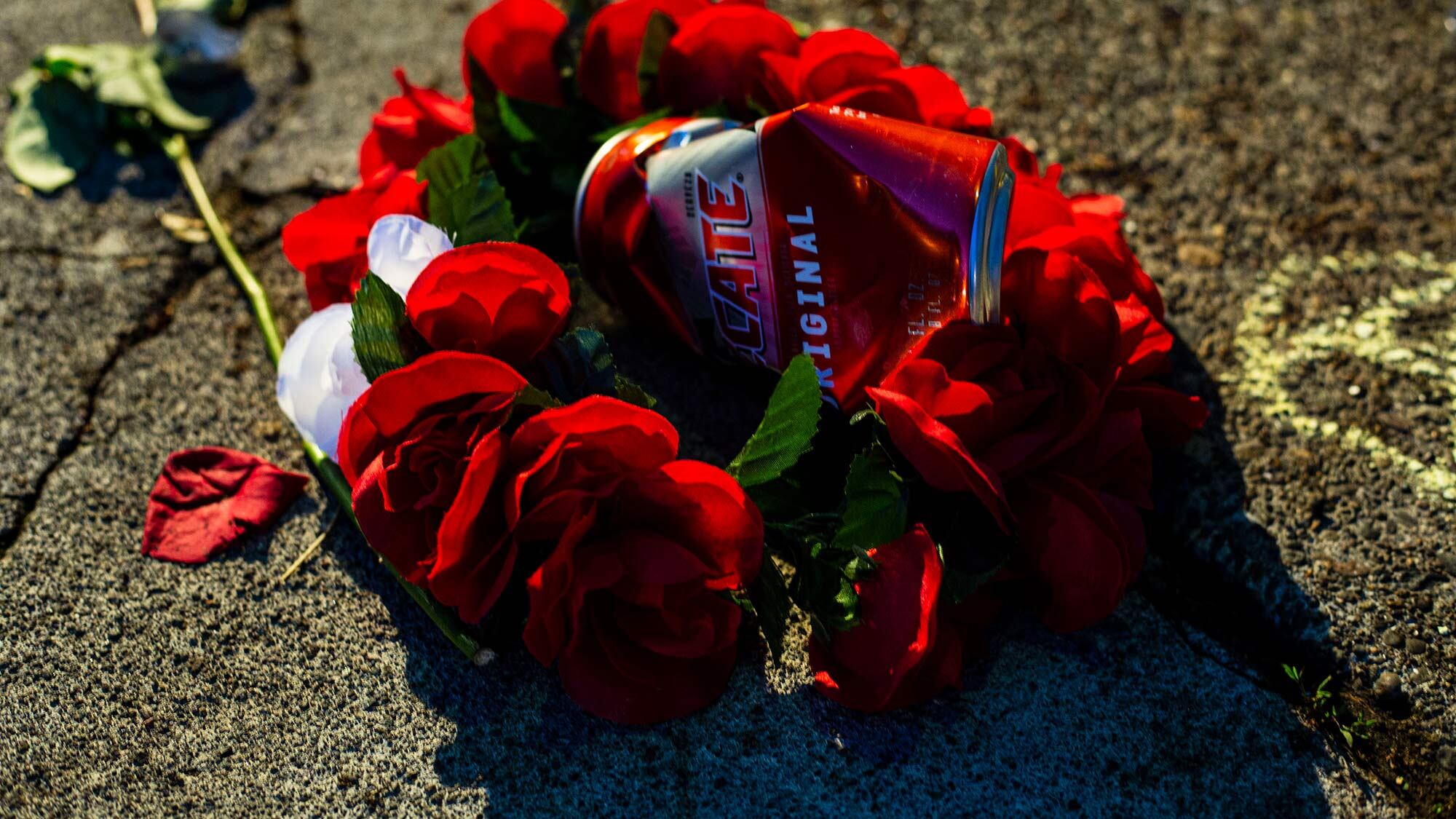Video footage from the Bossanova Ballroom and other security cameras on the Central Eastside provided crucial evidence that led police to charge a Portland man named Christopher Knipe in the 2019 hit-and-run killing of anti-fascist organizer Sean Kealiher, court documents show.
When police confronted Knipe, 47, with that evidence at his fruit-processing job last month, records say, he confessed.
Knipe owned the silver Ford Explorer that ran over Kealiher shortly after midnight Oct. 12, 2019, before crashing into a wall. Portland police detectives found that vehicle at the scene. Knipe initially told police that someone had stolen his car and he was at home the night of the crash.
But the security footage viewed by Detective Scott Broughton showed Knipe in line for a ticket at the Bossanova Ballroom, according to a probable cause affidavit filed today in Multnomah County Circuit Court. (A “hobocore” band called Goddamn Gallows played the ballroom that night, archived web pages show.) Footage from other Central Eastside businesses showed him and two friends walking toward the intersection of Northeast 9th Avenue and Everett Street.
That’s where Kealiher and friends leaving the bar Cider Riot got into an argument with a group of men. Security footage showed the Explorer driving away from the scene of the fight, then doing an abrupt U-turn before “driving directly” at Kealiher and his friends.
Broughton found more. “He also located video that appeared to show [Knipe] nonchalantly walking away from the crash,” the affidavit says.
(A friend of Kealiher, interviewed at the hospital, said he fired a handgun into the rear of the Explorer to stop the driver from running over Kealiher again.)
On June 28, Broughton contacted Knipe at his workplace—a Boring apple-processing company—and told him that the video contradicted his story of being home that night. “OK, I guess I better come clean then,” Knipe replied, according to the document. Then he said he was at the wheel of the Explorer.
Knipe “denied knowing that he had struck anyone with the car,” the affidavit says. “He said he must have accidentally stomped on the gas.…[Knipe] still had no explanation for why he executed a U-turn prior to returning to the intersection and driving over Kealiher. He said that he blacked out shortly after pulling away from the curb and had no recollection of what occurred up until the crash.”
Police arrested Knipe on Thursday. He faces a second-degree murder charge.
While it outlines the evidence against Knipe, the affidavit doesn’t shed much light on why it took so long to prove a case against him. The document does not say when detectives obtained security video footage, which leaves the nearly three-year gap between Kealiher’s killing and Knipe’s arrest largely unexplained.
Oregon Public Broadcasting reported that Lauren Kealiher, Sean’s mother, had long pointed to Knipe as a suspect. OPB reporters detailed a timeline today that suggested police were spurred to action by the nonprofit’s reporting.
Also unclear: Knipe’s motive. His confession didn’t include one. Police say no evidence suggests the killing was politically motivated. But Kealiher’s fellow leftists have long suspected that the killing had something to do with his anti-fascist organizing.
The answer to that question may hinge on what Knipe and Kealiher were arguing about on the corner of 9th and Everett after leaving their respective watering holes.

